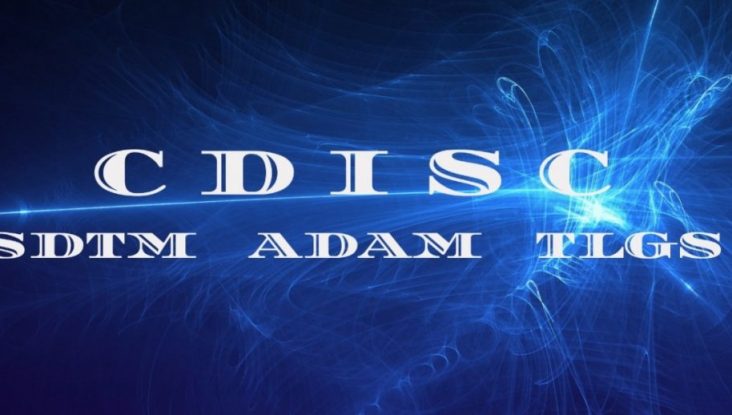COURSE DESCRIPTION
SDTM:
Study Data Tabulation Model Implementation Guide for Human Clinical Trials (SDTMIG)
Prepared by the Submissions Data Standards (SDS) team of the Clinical Data Interchange Standards Consortium (CDISC),to guide the organization involved in clinical trial to standardize the research data into SDTM datasets before submitting to a regulatory authority (FDA) for approval of new drug or method.
- Standardized datasets helps
1.To store all submitted data in a repository and
- With the use of standard software tools, help to work with the data more effectively with less preparation time and better support viewing and analysis.
- Facilitate data interchange between partners and providers.
- SDTM represents an interchange standard.
ADAM:
- Analysis Data Model Implementation Guide (ADaMIG) prepared by the Analysis Data Model (ADaM) Team of CDISC .
- Both the SDTM and ADaM standards were designed for submission to a regulatory agency (FDA).
- It describes fundamental principles that apply to all analysis datasets.
- Ihe design of ADaM datasets and associated metadata facilitate explicit communication of the content and source of the datasets supporting the statistical analyses .
- The Analysis Data Model supports efficient generation, replication, and review of analysis results.
TLFS/TLGS:
- Tables,Listings and Figures/Graphs plays vital role in SAS programming to display the data in a readable format.
- To display the data in the form of Charts and Graphs which helps in Understanding and Analyzing the Data.
- To create tables as per SAP(statistical Analysis Plan) document which is prepared to assist SAS programmers to detail on the scope of planned analyses, population definitions, and methodology on how prospective decisions are to be made for presenting study results.
COURSE STRUCTURE:
SDTM(STUDY DATA TABULATION MODEL):
Detailed study of SDTMIG(STUDY DATA TABULATION MODEL IMPLEMENTATION GUIDE) which covers:
- Fundamentals of SDTM includes different types of SDTM variables like
a. Identifier variables.
b. Topic variables.
c. Timing variables
d. Qualifier variables
e. Rule variables
- Different SDTM Domain classes which includes
A. Special Purpose Domains
B. General Observation Classes
C. Trial Design Domains
D. Relationship Datasets
- Deriving Data sets of Special Purpose Domains using SAS
a. Demographics(DM) Domain
b. Subject Elements(SE) Domain
c. Subject Visits(SV) Domain
- Deriving Data sets of General Observational Classes which are further categorized into 3 subclasses
1. Interventions which includes
a. Concomitant/Prior Concomitants Medication Domains(CM)
b. Exposure Domains (EX and EC)
c. Procedure Domain(PR)
2. Events which includes
a. Adverse Events Domain(AE)
b. Clinical Events Domain(CE)
c. Disposition Domain(DS)
d. Medical History Domain(MH)
3. Findings which includes
a. Drug Accountability Domain(DA)
b. Electrocardiogram Results Domain(EG)
c. Inclusion/Exclusion Criteria Domain(IE)
d. Laboratory Test Findings Domain(LB)
e. Pharmacokinetics Domains(PC and PP)
f. Physical Exam Domain(PE)
g. Questionnaires Domains(QS)
h. Vitals Domain(VS)
- Deriving data sets of Trial Design which includes
a. Trial Arms Domain(TE)
b. Trial Elements Domain(TE)
c. Trial Visits Domain(TV)
- Relationship datasets whicg includes
a. RELREC Datasets
b. SUPP Datasets
ADAM(ANALYSIS DATA MODEL):
Detailed Study of ADAMIG(ANALYSIS DATA MODEL IMPLEMENTATION GUIDE) which covers
- Fundamentals of ADAM.
a. Fundamental Principles
b. Traceability which gives the path of element which can be traced to its predecessors.
- ADAM Data structures which includes
a. ADAM Subject Level Analysis dataset(ADSL)
b. ADAM Basic Data Structure(BDS)
- Standard ADAM Variables which include
a. ADAM Variable conventions
b. ADAM ADSL Variables such as Identifier Variables(STUDYID,USUBJID) Demographic variables(AGE,SEX,RACE),Population Indicator variables(FASFL,SAFFL,ITTFL,COMPLFL), Treatment variables(ARM, ACTARM, TRTxxP, TRTxxA), Phase, Period variables, Trial Experience variables(EOSSTT,EOSDT,DCSREAS) etc.
c. ADAM BDS Variables such as Identifier variables, Treatment and Dose variables(DOSEP,DOSEA,DOSEU), Timing variables(ADT,ADY,AVISIT,APHASE), Period, Phase variables, Analysis Parameter variables(AVAL,PARAM,PARAMCD), Analysis criterion variables, Time to Event variables, Indicator variables(flag variables such as ABLFL,ONTRTFL), Population Indicators (ITTRFL,SAFRFL)etc.
- Implementation Issues and Standard Solutions which includes
a. Rules of Creation of Derived Rows and Derived Columns.
b. Identification of Records used in Analysis such as
1. Records used in Timepoint imputations(LOCF/WOCF) Analysis,
2. Baseline Records
3. Post-Baseline Conceptual Timepoint Records.
c. Identification of Population-Specific Analyzed Records such as flag variables(ITTFL and PPROTFL).
d. Identification of Records which Satisfy a Predefined Criterion for Analysis Purposes.
TLFS/TLGS(TABLES,LISTINGS,FIGURES/GRAPHS):
- ANALYSIS TABLES derived as per SAP document which includes
a. DEMOGRAPHIC TABLES.
b. VITALS TABLES.
c. LAB TABLES.
- Listings used to design tables without modifying the content and generating output in external files such as RTF.
- Graphs are used to display the data, to establish relation between the variables ,and analyze the results.
- Detailed study of Procedures used to generate the graphs such as PROC PLOT,PROC CHART,PROC GCHART,PROC SGPLOT,PROC SGPANEL,PROC SGPIE etc.
CERTIFICATION
With the completion of course and after assessing the candidates through tests certificate will be provided on successful completion of course.
LEARNING OUTCOMES
- Over 37 lectures and 55.5 hours of content!
- LIVE PROJECT End to End Software Testing Training Included.
- Learn Software Testing and Automation basics from a professional trainer from your own desk.
- Information packed practical training starting from basics to advanced testing techniques.
- Best suitable for beginners to advanced level users and who learn faster when demonstrated.
- Course content designed by considering current software testing technology and the job market.
- Practical assignments at the end of every session.
- Practical learning experience with live project work and examples.
Curriculum
- 8 Sections
- 4 Lessons
- 8 Weeks
- WEEK 1CDISC-SDTM4
- WEEK 2CDISC-SDTM0
- WEEK 3CDISC-SDTM0
- WEEK 4CDISC-SDTM0
- WEEK 5CDISC-ADAM0
- WEEK 6CDISC-ADAM0
- WEEK 7TLFS0
- WEEK 8TLFS0

